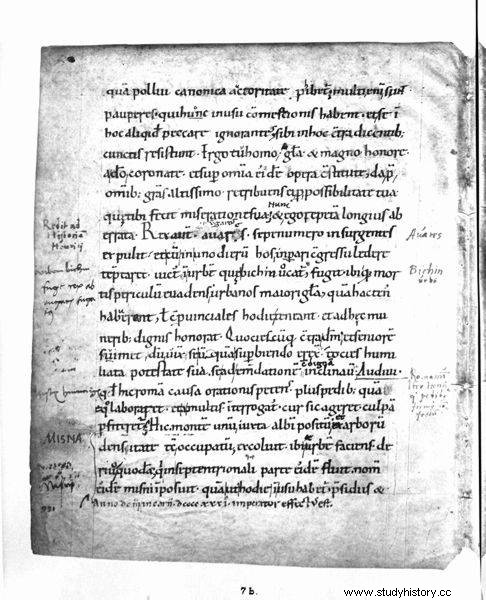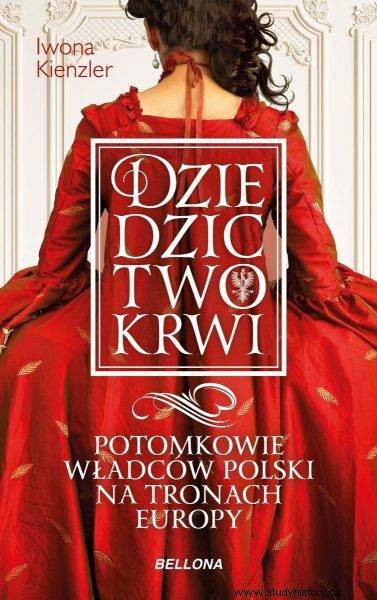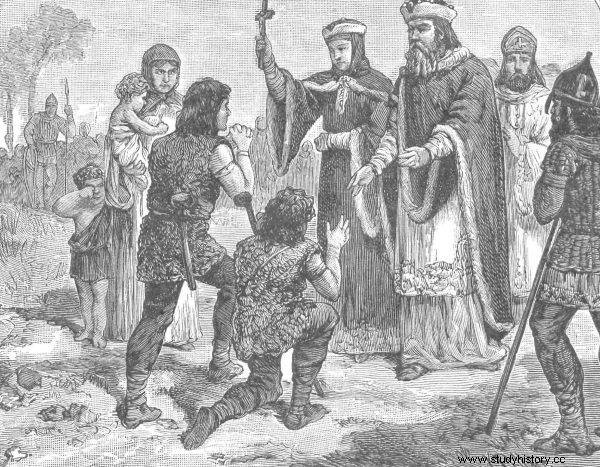"Swen Widłobrody was a half-Slav after his mother, and since he took his wife from Poland, his son Canute the Great, the monumental ruler of the Scandinavians, according to his blood, he was three-quarters a Slav, and half a Piast" - notes an outstanding Polish medievalist and archaeologist, Przemysław Urbańczyk. Who was Świętosława? Did she even exist?
Scandinavians do not like being reminded of this. Who knows, maybe it is this reluctance that underlies doubts about the identity of Świętosława-Storråda, who according to tradition was the mother of three Scandinavian rulers, ruling Denmark, Sweden and Norway, as well as England, and came from Poland.
Moreover, she was to be the daughter of Mieszko I, and thus also the sister of the first crowned ruler of our country, Bolesław the Brave. Although it must be admitted that among those doubting her identity, and more precisely her Piast roots, there are also Polish historians.
Their doubts are that none of the medieval Polish chronicles even mentions the existence of Świętosława, at the same time extensively writing about the first rulers of the Piast dynasty . Moreover, some people question its existence, considering that the stories about Świętosław are a collection of biographies of several other princesses, not of Polish or Slavic origin, but of Scandinavian origin.
Did Świętosława even exist?
Meanwhile, the absence of Mieszko I's daughter in Polish chronicles does not prove that he is a fictional character. Our historians, headed by Gall Anonym, did not write about women, wives, mothers, sisters or daughters of kings and princes at all. their lovers not to mention why should they write about Bolesław's sister, who played a much greater role in the history of Scandinavia than Poland?

Piastówna is mentioned in medieval sources written outside our country, incl. in the Chronicle of Thietmar
For example, Gall, whose work was created at the court of Władysław Herman, never mentioned the daughters of Brave, only the German chronicler Thietmar talks about them when he writes about the offspring of the first crowned ruler of our country.
Meanwhile, Piastówna is mentioned in medieval sources written outside our country, namely in Thietmar's Chronicle , The deeds of the bishops of the Hamburg church by Adam of Bremen and in an anonymous piece Encomium Emmae Reignae (Latin Praise of Queen Emma ). The latter work is a kind of medieval biography written roughly between 1041 and 1042 by an unknown monk from Saint-Bertin Monastery in Saint-Omer, Flanders.
A signal from the Nordic sagas
Although the first chronicler, Thietmar, does not mention the name of the Polish princess, he writes about the daughter of Mieszko I, and also the sister of Bolesław the Brave, who married Sven Widłbeard and gave birth to two sons - Knut and Harald. This information is considered credible because the German chronicler was well versed in the matters of the Brave State , a ruler who causes quite a lot of trouble to the neighboring countries.
The story did not like Mieszko's son, but it was because of this dislike that he devoted a lot of space in his chronicle to Poland and thanks to this we have quite detailed information about the life, activities and politics of Brave.
Mentions about Świętosław are also found in old Scandinavian sagas, although they appear under different names, but it is difficult to treat these works as reliable historical sources. Especially since the form in which they have survived to our times is far from the original.

The text is an excerpt from the book by Iwona Kienzler “Blood heritage. Descendants of Polish kings on the thrones of Europe ”, which has just been released by the Bellona publishing house.
Initially, these sagas existed only in oral form, passed down from generation to generation, changed over time, supplemented with myths and legends, which were lightly combined with historical facts, adjusting them to the tastes and needs of subsequent generations of listeners. And it's hard to blame the authors of these versions about it, because the main purpose of such works was not to teach history, but to provide entertainment.
Nevertheless, the researchers, who meticulously separate the grains from the chaff, manage to find out about the historical events and characters they tell about. Most of these works were written relatively late, only two hundred years after the first oral version was written. Therefore, it seems likely that the name of the mother of the rulers from the beginning of Denmark, Sweden and Norway, which was difficult to pronounce by the Scandinavians, was deliberately replaced by the familiar sounding Sygryda (Sigrida) Storråda , Saum-Aesa, Astrida or Gunhilda.
Mother of Kings
This procedure complicated the case for researchers studying the pedigree of Knut's mother. According to some historians, before he married Dobrawa Przemyślidka, Mieszko I had another wife - the daughter of the Danish king Harald Blatand, Geira. And it was from this union that two daughters were to come:the mother's namesake, Geira, married to Erik Tryggvason, and Astra, who married Jarl Jomsborg Sigwald Strudhaldson of the Zealand dynasty. When Mieszko decided to accept Christianity, Geira was already dead, so he could marry Dobrawa.
Evidence for this would be found in the twelfth and thirteenth century sagas that mention the ruler of the Wends or the Slavs, a certain Buryslava or Burisleif, who had three daughters:Gunhilda, Astrid and Geira. According to some researchers, Burysław is Mieszko I.

According to some researchers, Burysław is Mieszko I.
On the other hand, Rafał T. Prinke, a historian specializing in genealogy, put forward a bold thesis in 2004 that Świętosława was actually the daughter of the founder of the Polish state, but did not come from his marriage to Dobrawa, but from his relationship with Oda which shifts the princess's date of birth over time. At the same time, he questioned the thesis about Mieszkówna's marriage to Eryk the Victorious, claiming that she became the wife of Sven Widłobrody, with whom she had four children, including Knut (Canute).
Meanwhile, Thietmar does not mention that the princess, the wife of the Danish ruler, was Bolesław's half-sister, and if that were the case, he would not fail to include this information, especially since her mother was supposed to be a German woman, Oda. According to most historians, Thietmar is right, Świętosława really existed and was the daughter of Mieszko and Dobrawa. Even Queen Elizabeth II, during her visit to Poland in 1996, giving a speech to the Seym, said:
Our dynastic, commercial and political contacts over the centuries were rich and varied. One of my very distant ancestors, King Canute, was the nephew of your King Bolesław Brave.
Since it is not appropriate to question the words of the monarch, with whom many scholars agree, let us therefore conclude that Knut the Great (also known as Canute) was the natural grandson of Mieszko I and Dobrawa, the fruit of the relationship of the Polish ruler's daughter with Swen Widłobrody. Before, however, Świętosława married the Danish ruler with a picturesque nickname, she was the wife of Eric the Victorious, with whom she had two children - son Olaf (Olof) and daughter Holmfryda. While we know practically nothing about the fate of Holmfryda, apart from the fact that she married the Norwegian Jarl (Prince) Sven Hakonsson, her older brother entered the history of Sweden and the Church for good.
Source:
The text is an excerpt from the book by Iwona Kienzler “Blood heritage. Descendants of Polish kings on the thrones of Europe ”, which has just been released by the Bellona publishing house.
